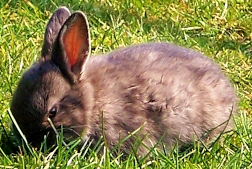
Donations: Charities
As the year wraps up, I’m sharing each of the charities that I donate to on a recurring basis, and giving a brief rundown of how they each work.
I donate 10% of my annual income to charities, focusing on the charities that I think are most able to make a positive difference in the world.
The three charities that I give relatively large amounts of money to are:
GiveDirectly
GiveDirectly directly sends money to people living in extreme poverty. Specifically, they select villages where all or most residents are living on under $2.15/day, then give each household $1,000, with no strings attached. They can decide for themselves how to use the money. This really improves people’s lives. GiveDirectly has given money to over 440,000 households over the last 15 years through this program. They are currently running programs in Kenya, Malawi, Mozambique, Rwanda, and Uganda.
GiveWell
GiveWell, is a grant distribution organization, focusing on high-impact health interventions in low-resource areas. I donate to their All Grants Fund. They pass along the donations that they’re sent to a wide variety of location- and topic-specific organizations. Some of their recent grants recipients include:
- Nutrition International, for rice fortification in India, adding micronutrients such as iron, folic acid, zinc, and vitamin B12, to reduce malnutrition.
- Medicines Development for Global Health (MDGH), to complete the World Health Organization’s pre-qualification evaluation process for moxidectin, which is a new treatment that MDGH has developed for onchocerciasis, also known as river blindness, a neglected tropical disease. MDGH has already taken moxidectin through the US approval process, this grant is towards getting it approved worldwide.
- Clinton Health Access Initiative, for tuberculosis contact-tracing within households, focused on children under 5 in India.
- PATH, to help with their rollout of the RTS,S malaria vaccine in Burkina Faso, Democratic Republic of the Congo, Mozambique, Nigeria, and Uganda.
Vesta
Vesta is a Coastal Carbon Capture research organization. They research the process of spreading sand made of the mineral olive on coastal areas such as beaches, where the olivine sand reacts with dissolved carbon dioxide in the water, removing carbon dioxide from the environment. I’ve been donating to fund their research for many years. Initially, it was early-stage, foundational research, and now they now have two field pilots, to research the practical effects:
- A smaller initial project in beach remediation in Southampton, NY, which is nearing the end of the data-gathering period.
- A larger project a bit father offshore in the Outer Banks, near Duck, North Carolina, after a long permitting process.